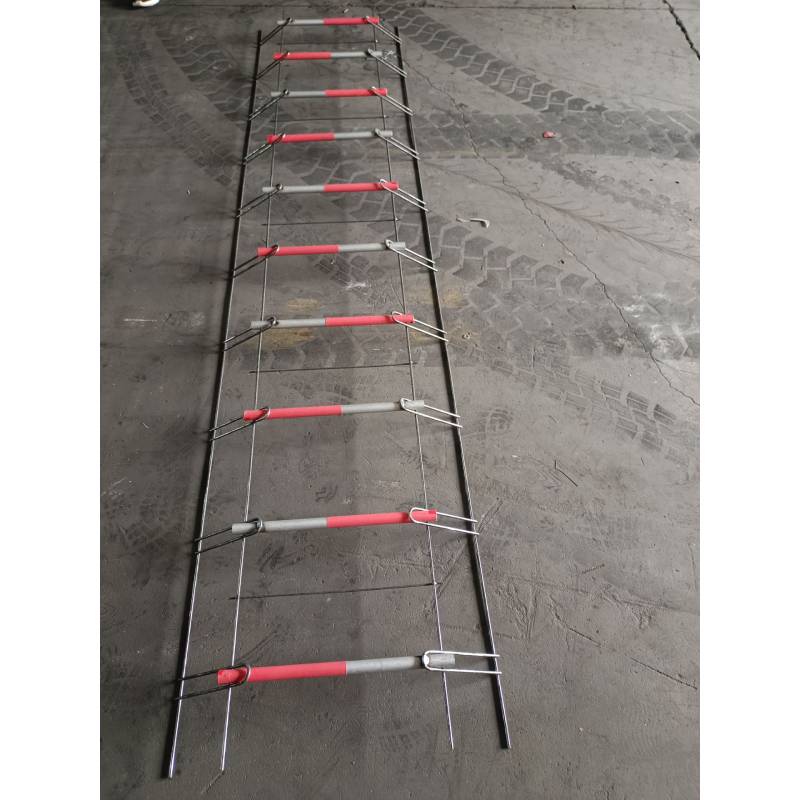
- Mobile Phone
- +8613931874955
- sales@cntcmetal.com
high load extension springs
Understanding High Load Extension Springs Design and Application
Extension springs are vital components in various mechanical systems, providing significant force in response to stretching. Among these, high load extension springs stand out due to their ability to withstand substantial loads while maintaining operational efficiency. This article delves into the specifics of high load extension springs, their design considerations, applications, and maintenance.
What are Extension Springs?
Extension springs are helical coils designed to resist pulling forces. Unlike compression springs that compress under load, extension springs stretch when a force is applied, storing energy in the process. They are made from high-grade materials to ensure durability under stress, typically featuring hooks or loops on each end for secure attachment.
Characteristics of High Load Extension Springs
High load extension springs are engineered for applications that involve significant stretching and heavy loads. These springs typically exhibit the following characteristics
1. Material Strength They are manufactured from high-tensile wire, often made of stainless steel, carbon steel, or special alloys. The choice of material is crucial as it determines the spring’s fatigue life and maximum load capacity.
2. Wire Diameter and Coil Diameter The wire diameter and overall coil diameter play a critical role in load capacity. Thicker wires can carry higher loads, while smaller coil diameters often allow for more compact designs.
3. Coil Count The number of active coils in a spring affects its load-bearing capacity and flexibility. More coils usually equate to a spring that can stretch further while reducing the risk of breakage.
4. Spring Design High load extension springs can be customized in terms of design—considering factors like the length, diameter, and specific load requirements. This customization allows them to meet diverse application needs effectively.
Applications of High Load Extension Springs
High load extension springs find applications in various industries and devices, including
1. Automotive Industry Used in door mechanisms, hoods, and trunks, high load extension springs enable smooth operation and reliable performance under significant stress.
2. Aerospace In aircraft, these springs support various functions, including landing gear and control surface mechanisms, where lightweight yet robust components are essential.
3. Industrial Machinery They facilitate mechanisms in conveyors and automated systems, providing reliable tension and facilitating the smooth operation of machinery.
high load extension springs

Design Considerations for High Load Extension Springs
When designing high load extension springs, several critical factors must be considered
1. Load Requirements Accurately defining the intended load helps in selecting wire diameter and coil parameters.
2. Environment The operational environment plays a role in material selection. Exposure to corrosive settings may necessitate the use of stainless steel or coated materials.
3. Fatigue Life The anticipated number of cycles and load variations should be analyzed to ensure that the spring design accommodates fatigue limits.
4. Safety Factor Incorporating an adequate safety factor is essential to prevent premature failure under unexpected conditions.
Maintenance of High Load Extension Springs
To ensure longevity and reliable performance, proper maintenance is crucial
1. Regular Inspections Routine checks for wear and tear can help identify early signs of fatigue or damage.
2. Lubrication Applying a suitable lubricant helps reduce friction, particularly in high-load applications, enhancing operational efficiency.
3. Replacement Strategy Having a clear strategy for replacing springs that have reached their fatigue limits can prevent breakdowns in machinery and ensure continuous operation.
Conclusion
High load extension springs are indispensable in various applications, providing the necessary force while maintaining flexibility and resilience under stress. Their design requires careful consideration of materials, dimensions, and environmental factors to meet the demands of modern machinery and devices. Understanding their characteristics and applications not only aids in selection but also in ensuring optimal performance and longevity. Proper maintenance practices further extend the life and efficiency of these essential components, affirming their critical role in mechanical systems across industries.
share:
-
Why Sacrificial Formwork Is Redefining Underground ConstructionNewsJun.06,2025
-
The Structural Dynamics of Modern Concrete: How Snake Spacers Revolutionize Flexible ReinforcementNewsJun.06,2025
-
Snake Spacers Smart-Lock Concrete Reinforcement with Surgical PrecisionNewsJun.06,2025
-
Snake Spacers: Reinforcement Precision for Modern Concrete ProjectsNewsJun.06,2025
-
Snake Spacers Powering Concrete's Structural DNANewsJun.06,2025
-
Slither into Success: Snake Spacers' Precision Bite for Unbreakable ReinforcementNewsJun.06,2025
-
Sacrificial Formwork: Building Stronger, Faster, and Safer StructuresNewsJun.06,2025



















